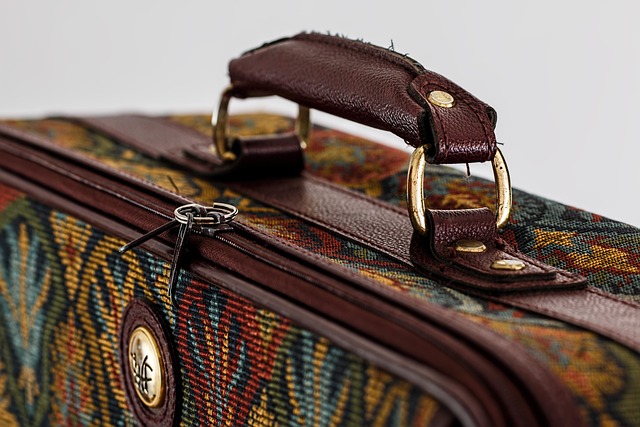Different Types Of Luggage For Everyday Travel
Luggage comes in many forms, from rolling suitcases to backpacks and duffel bags. Each type is designed to make carrying clothes and items easier, whether for short trips or longer journeys. In this article, you will learn about the main kinds of luggage, how they are used, and what makes them different from one another. With simple tips and clear examples, this guide helps you see how luggage can be both useful and practical for school, work trips, or vacations.

Hard-Shell vs. Soft-Shell Travel Luggage
Hard-shell and soft-shell luggage represent two fundamental categories in travel luggage. Hard-shell luggage, constructed from polycarbonate, ABS plastic, or aluminum, offers superior protection for fragile items. These rigid exteriors resist impact, prevent crushing, and provide excellent weather resistance, making them ideal for air travel where baggage handling can be rough. Conversely, soft-shell luggage, typically made from nylon, polyester, or canvas, offers greater flexibility. These bags compress more easily for storage, often include external pockets for quick access to essentials, and generally weigh less than their hard-shell counterparts. The material difference also affects durability—hard shells may crack under extreme pressure, while soft shells can tear but usually withstand compression better.
Essential Features of Lightweight Luggage
Lightweight luggage has revolutionized travel by reducing the physical strain of transporting possessions. Modern lightweight suitcases often weigh between 4-7 pounds when empty, compared to traditional models that might weigh 10 pounds or more. This weight reduction comes from innovative materials like polycarbonate blends, reinforced nylon, and aluminum frames. Key features to look for in quality lightweight luggage include multi-directional spinner wheels for effortless movement, telescoping handles with ergonomic grips, reinforced corners to protect high-impact areas, and internal organization systems with compression straps. While lightweight construction offers obvious benefits for travelers facing airline weight restrictions, these pieces may sacrifice some durability compared to heavier counterparts, requiring more careful handling.
Luggage Bags for Different Travel Scenarios
Different travel scenarios demand specific types of luggage bags. For business travel, slim briefcases, laptop bags, or compact rolling cases provide professional appearance while accommodating documents and tech necessities. Weekend getaways call for duffel bags or small carry-ons that offer sufficient space for 2-3 days’ worth of clothing without overwhelming bulk. Extended vacations typically require full-sized checked luggage with expandable compartments to accommodate souvenirs accumulated during trips. Adventure travel benefits from backpacks or convertible luggage with durable, water-resistant exteriors and multiple carrying options. For daily commuting, messenger bags, totes, or small backpacks offer convenient transportation of essentials while maintaining mobility on public transportation or during walks between locations.
Specialized Travel Luggage Options
Beyond standard luggage types, specialized options address specific travel requirements. Garment bags feature specialized compartments designed to transport formal attire with minimal wrinkling—ideal for business travelers or those attending special events. Children’s luggage, scaled appropriately for younger travelers with playful designs and easy-to-manage features, encourages independence while traveling. Pet carriers, which must comply with airline regulations if flying, allow safe and comfortable transportation of animal companions. Camera bags and equipment cases offer padded protection with customizable dividers for valuable technology. Additionally, eco-friendly luggage made from sustainable materials like recycled plastics, organic cotton, or vegan leather provides environmentally conscious options without sacrificing functionality.
Smart Luggage and Technological Innovations
Recent technological advances have created “smart luggage” that incorporates digital features into traditional designs. USB charging ports embedded in suitcases allow travelers to charge devices on the go, while Bluetooth-enabled tracking systems work with smartphone apps to locate misplaced bags. Digital scales built into handles help avoid overweight baggage fees by providing instant weight readings. Some advanced models even include GPS tracking, proximity alerts, remote locking mechanisms, and motorized mobility options that allow the luggage to follow its owner autonomously. However, travelers should note that certain smart luggage features, particularly built-in lithium-ion batteries, may face airline restrictions, requiring removable battery packs for air travel.
Comparing Popular Luggage Options and Prices
When selecting luggage, comparing features, durability, warranty options, and price points helps identify the best value for specific travel needs. The market offers options across various price ranges to accommodate different budgets.
| Luggage Type | Average Price Range | Key Features | Best For |
|---|---|---|---|
| Hardside Carry-On | $50-$300 | Impact-resistant shell, spinner wheels | Air travel, protecting fragile items |
| Softside Carry-On | $40-$250 | External pockets, expandable sections | Versatile travel, maximizing space |
| Lightweight Checked Bag | $80-$400 | Reduced weight, increased capacity | Extended trips with weight restrictions |
| Rolling Duffel | $60-$200 | Flexible storage, durable materials | Adventure travel, varied packing needs |
| Travel Backpack | $40-$300 | Hands-free carrying, compact design | Urban exploration, backpacking trips |
| Garment Bag | $50-$350 | Specialized compartments for hanging clothes | Business travel, formal events |
Prices, rates, or cost estimates mentioned in this article are based on the latest available information but may change over time. Independent research is advised before making financial decisions.
When choosing luggage for everyday travel, consider your typical journey length, transportation methods, and specific carrying needs. The ideal luggage balances durability, weight, storage capacity, and maneuverability while accommodating your budget. By understanding the advantages of different luggage types and matching them to your travel requirements, you can make an informed decision that enhances your travel experience for years to come.




